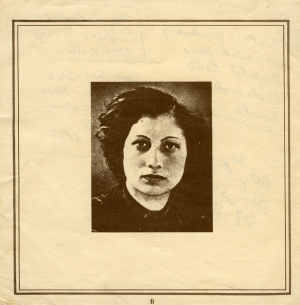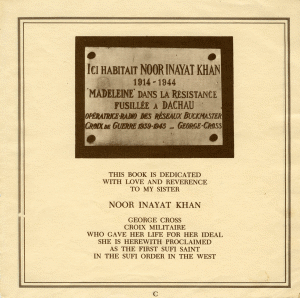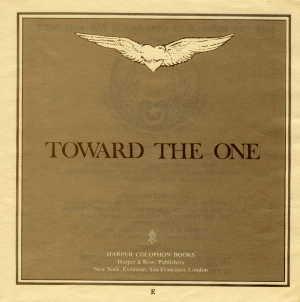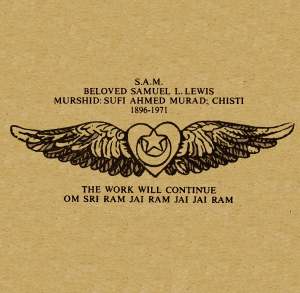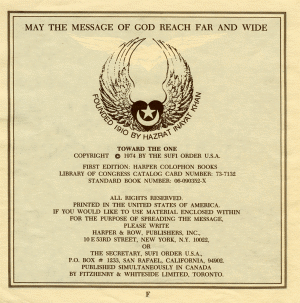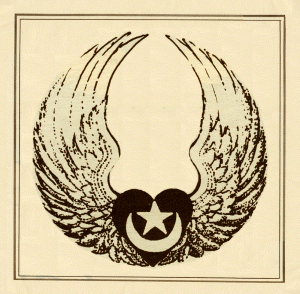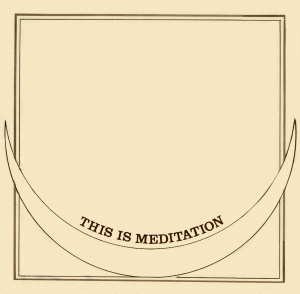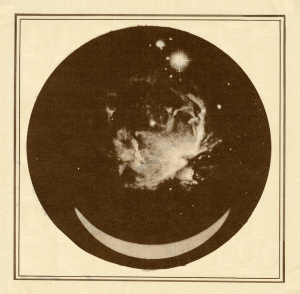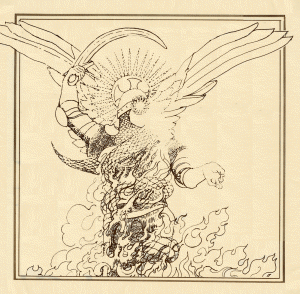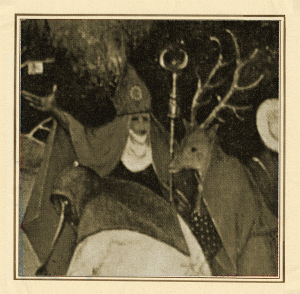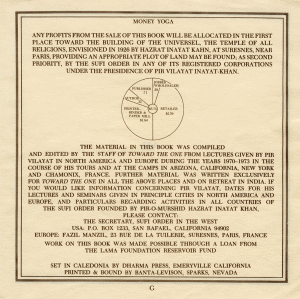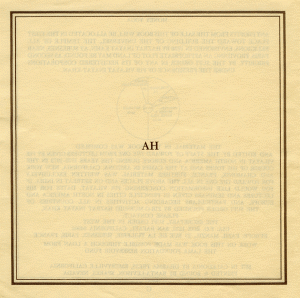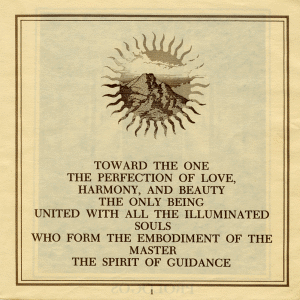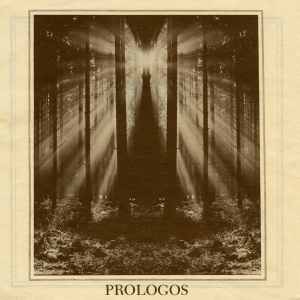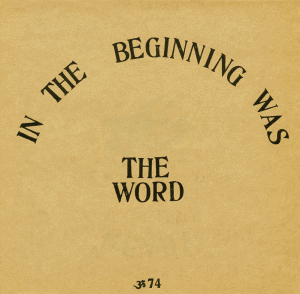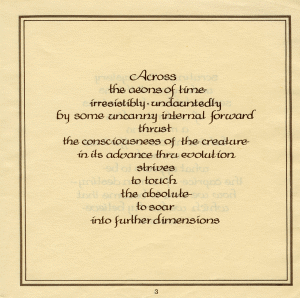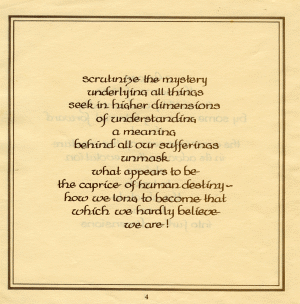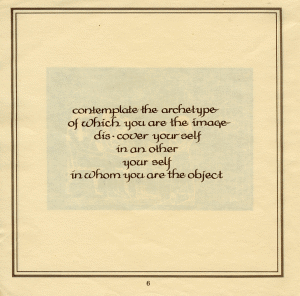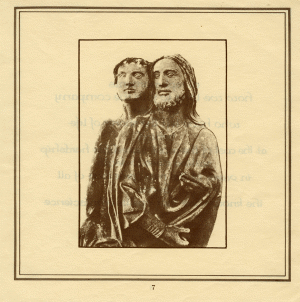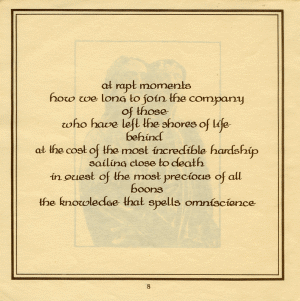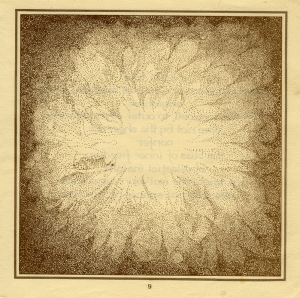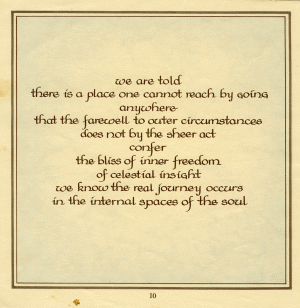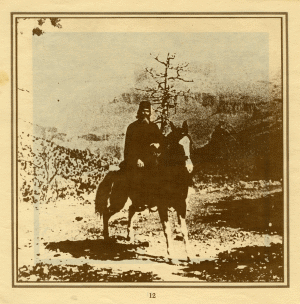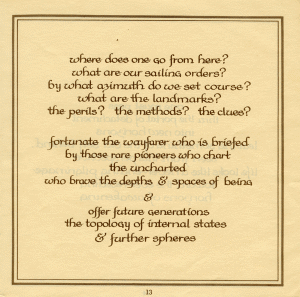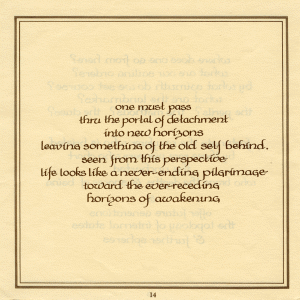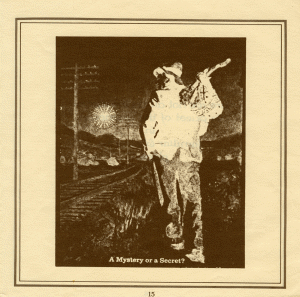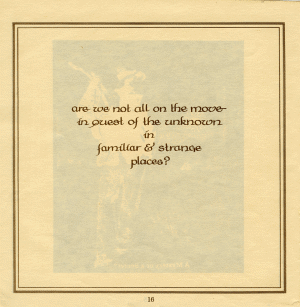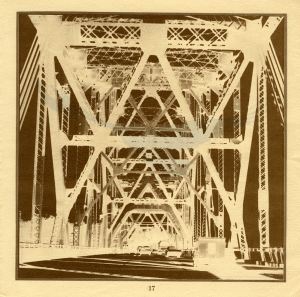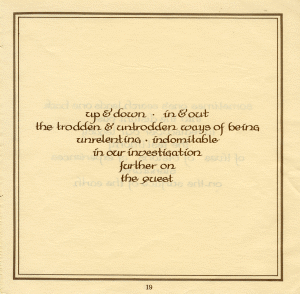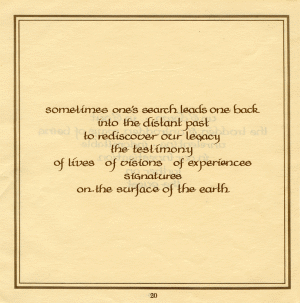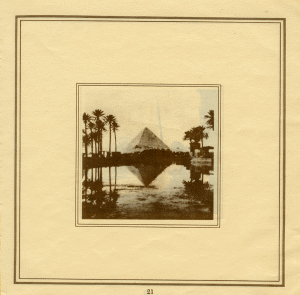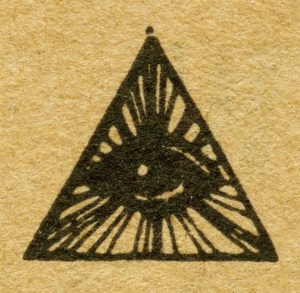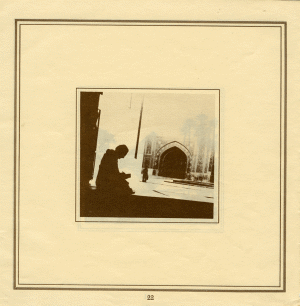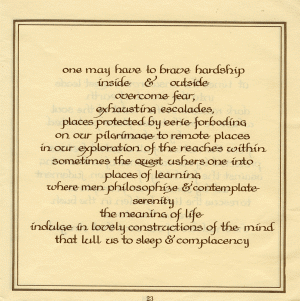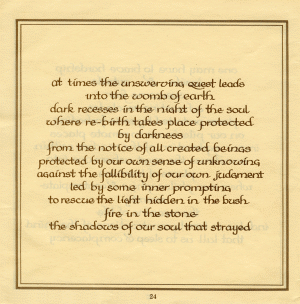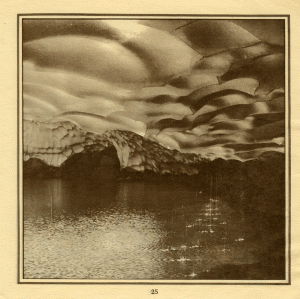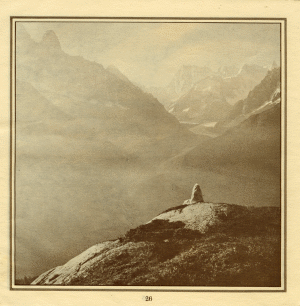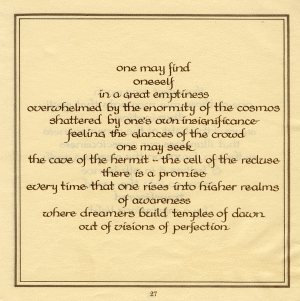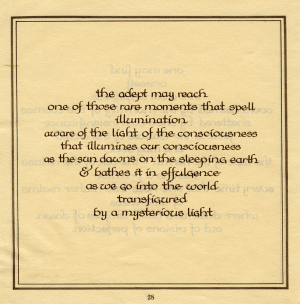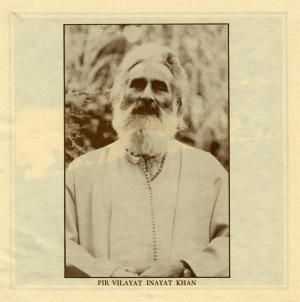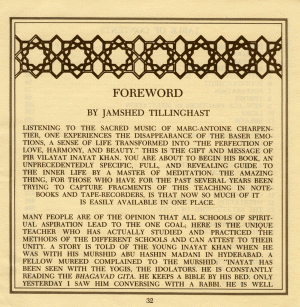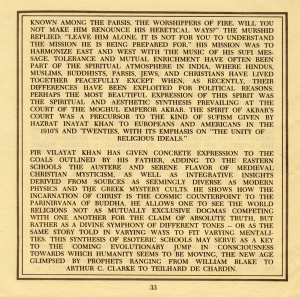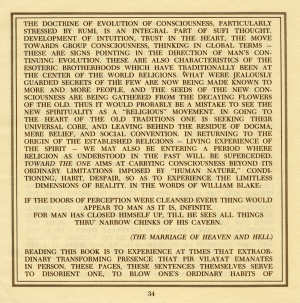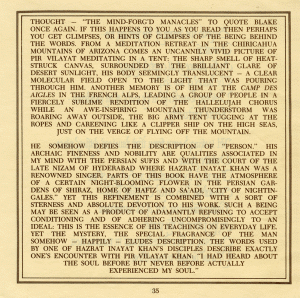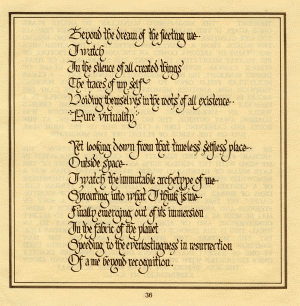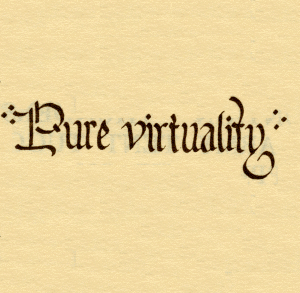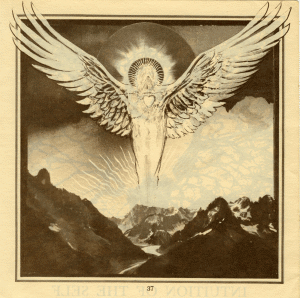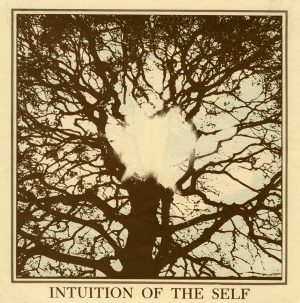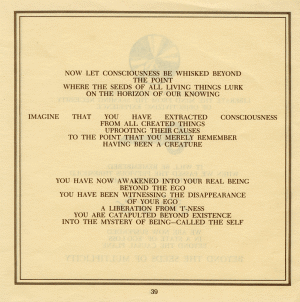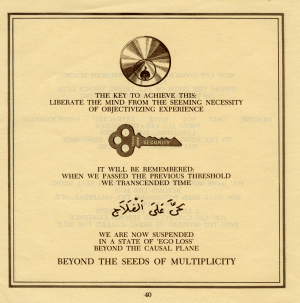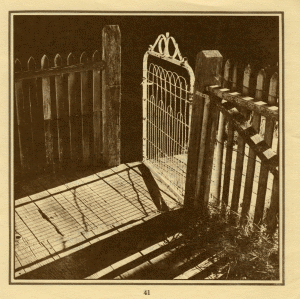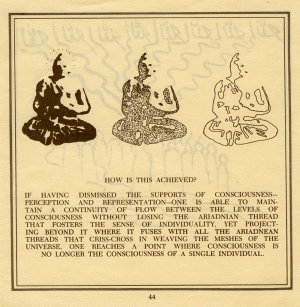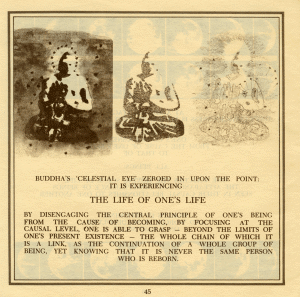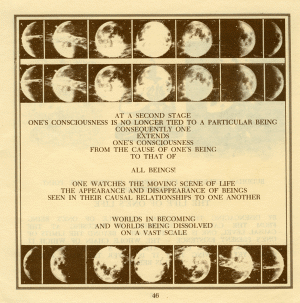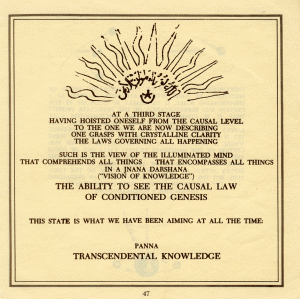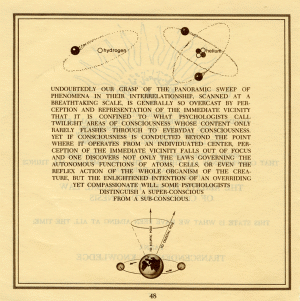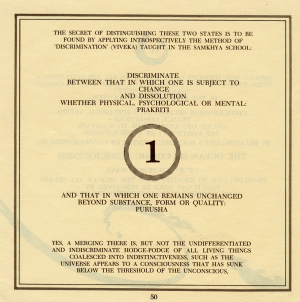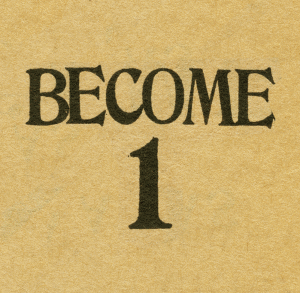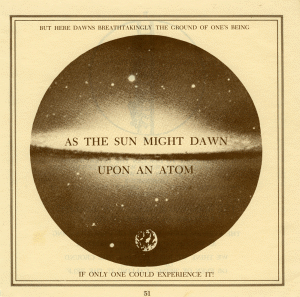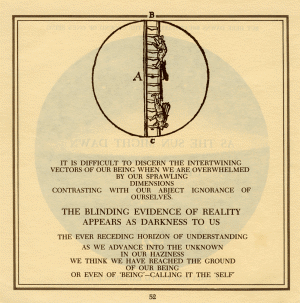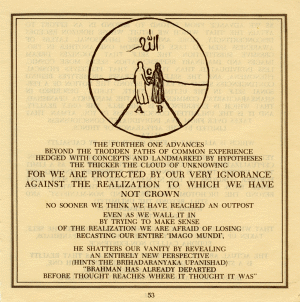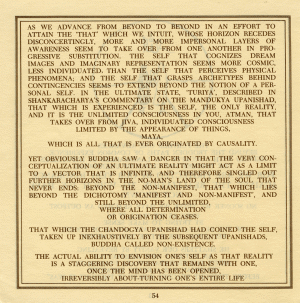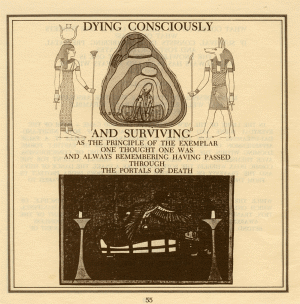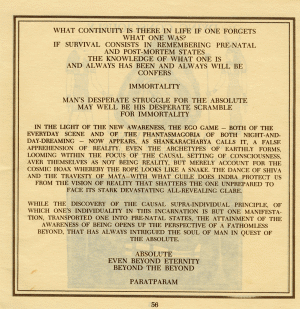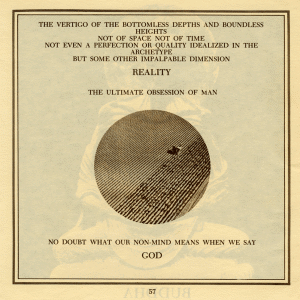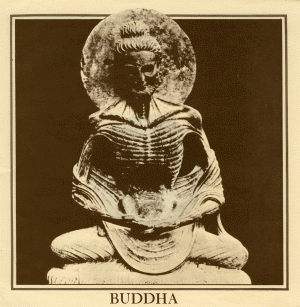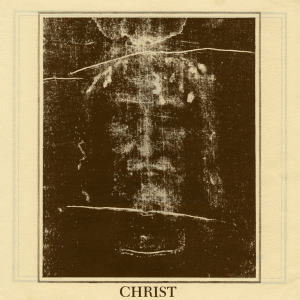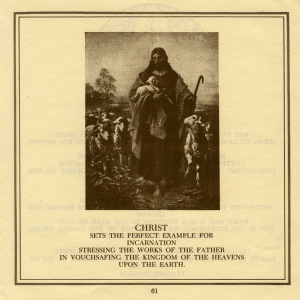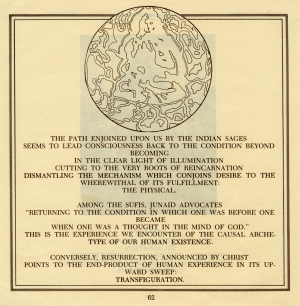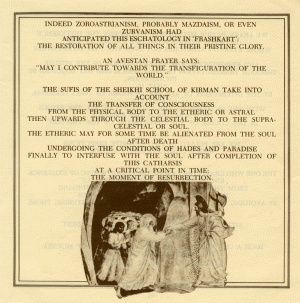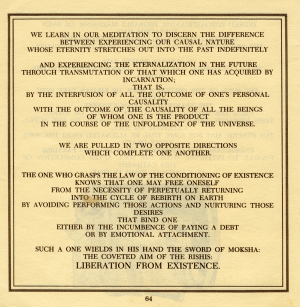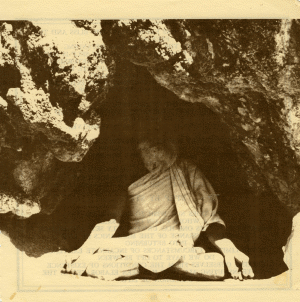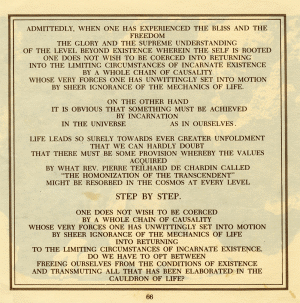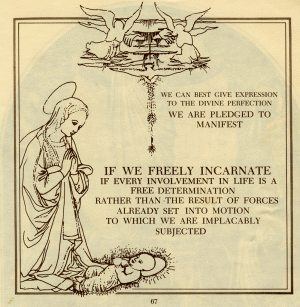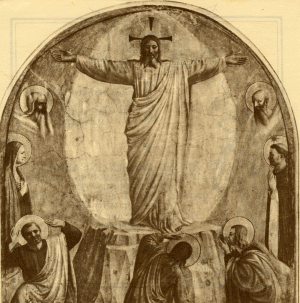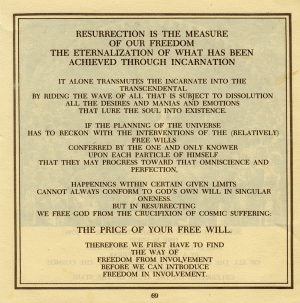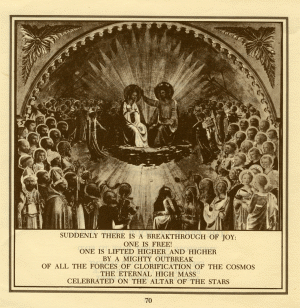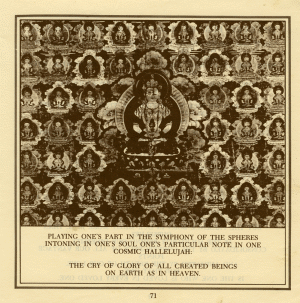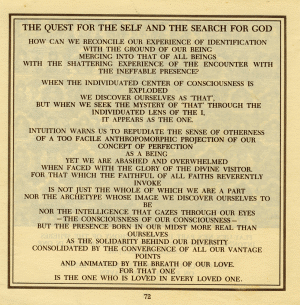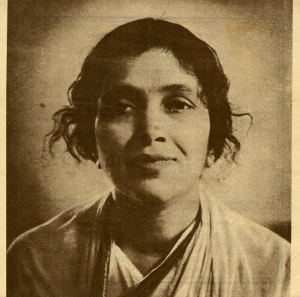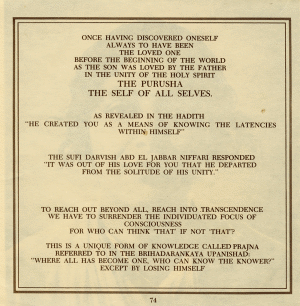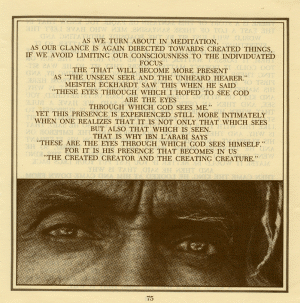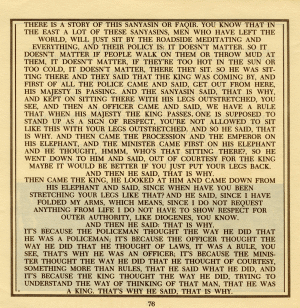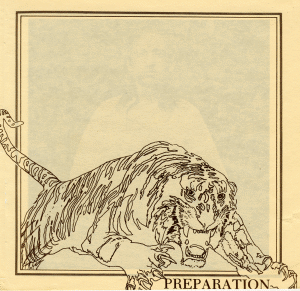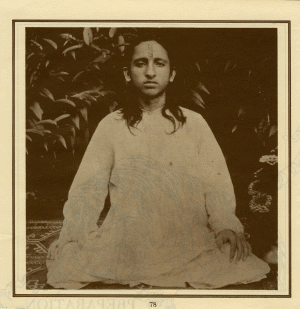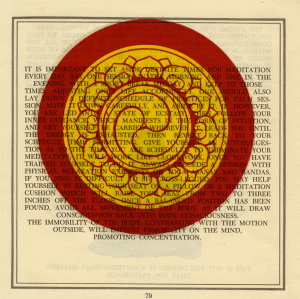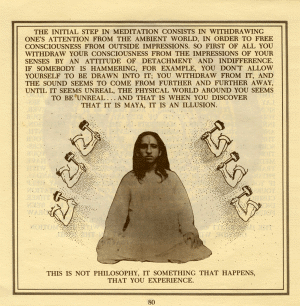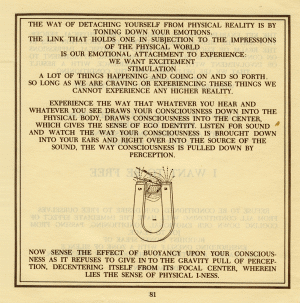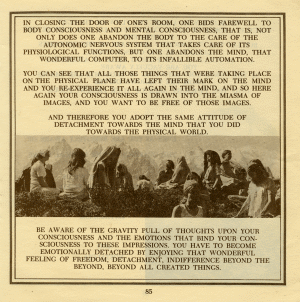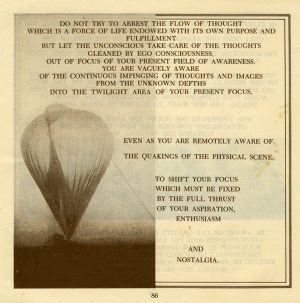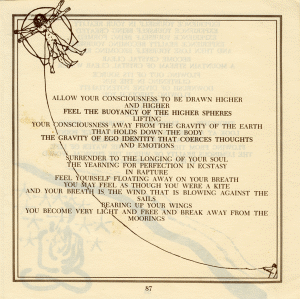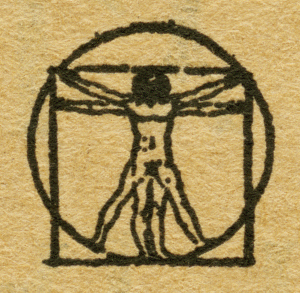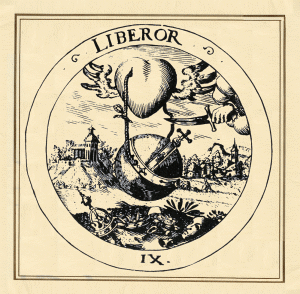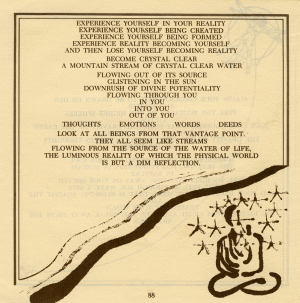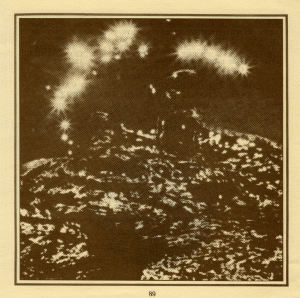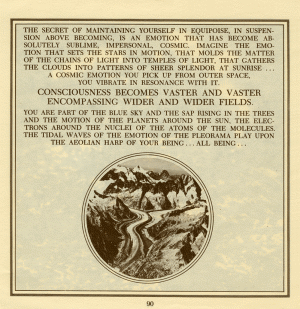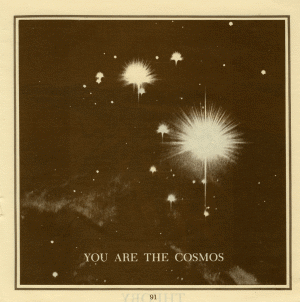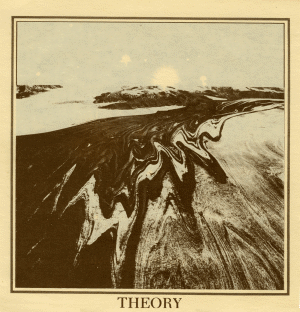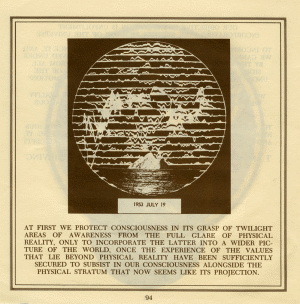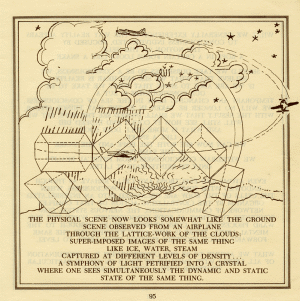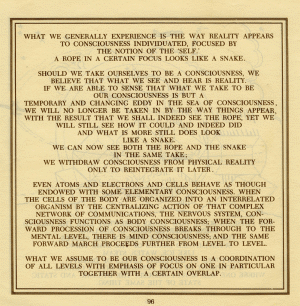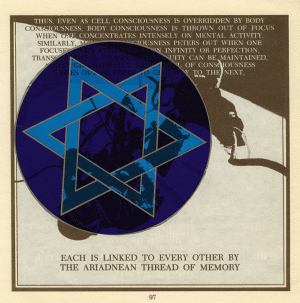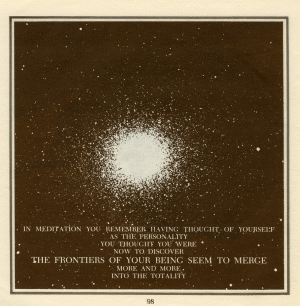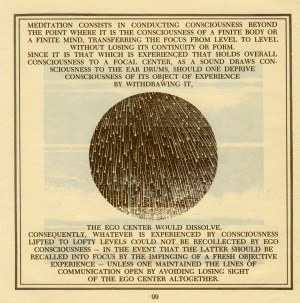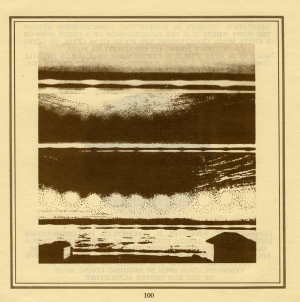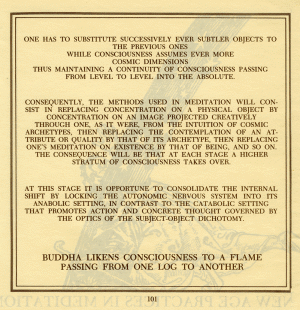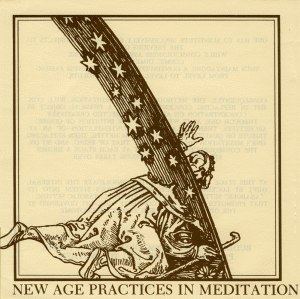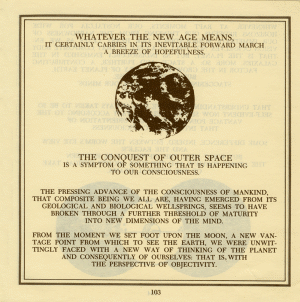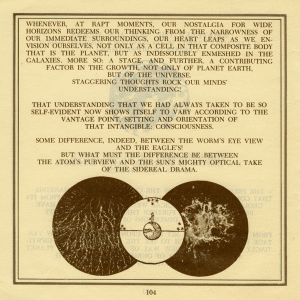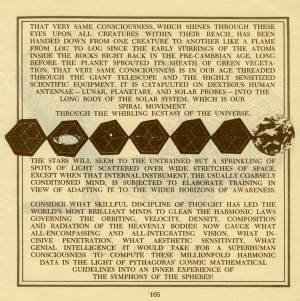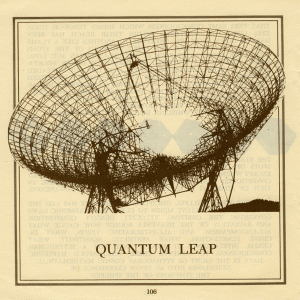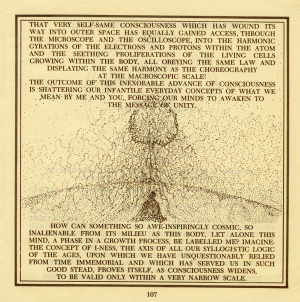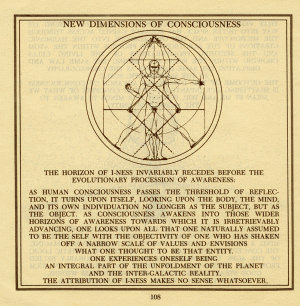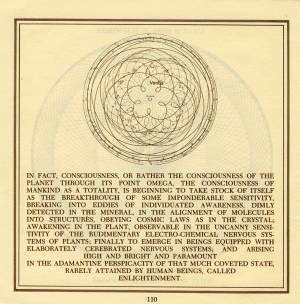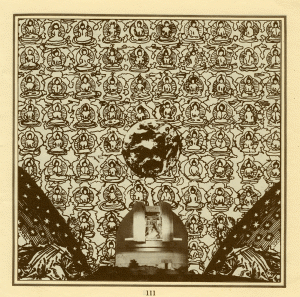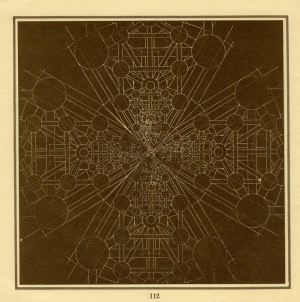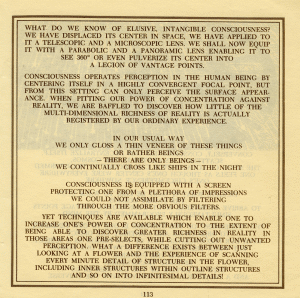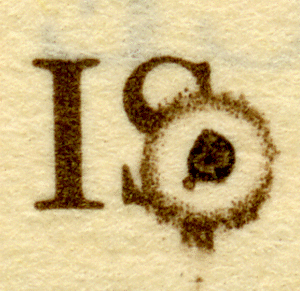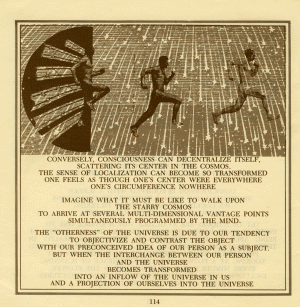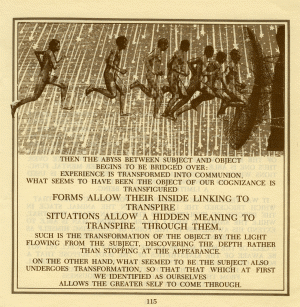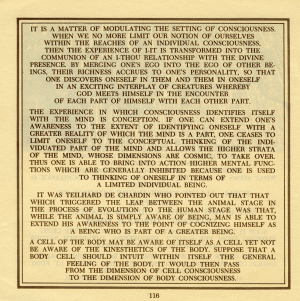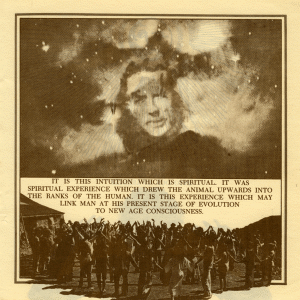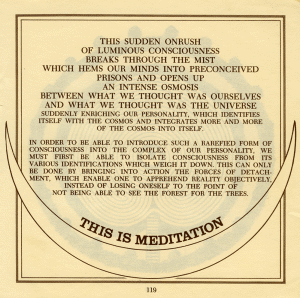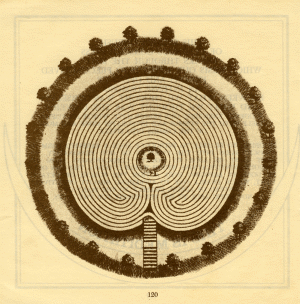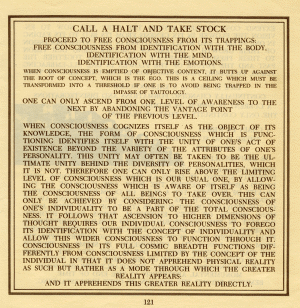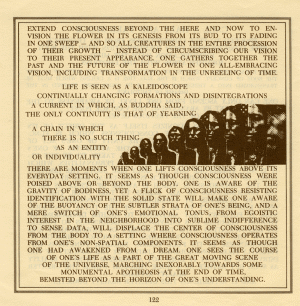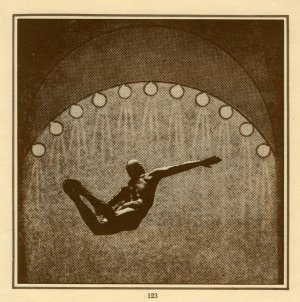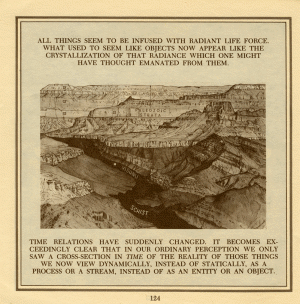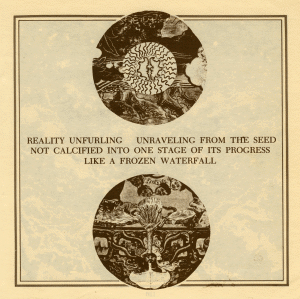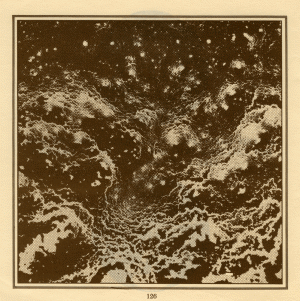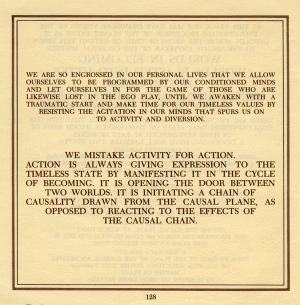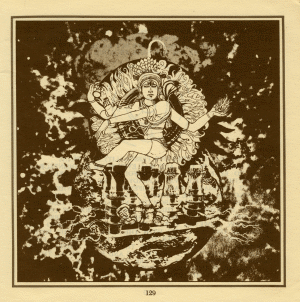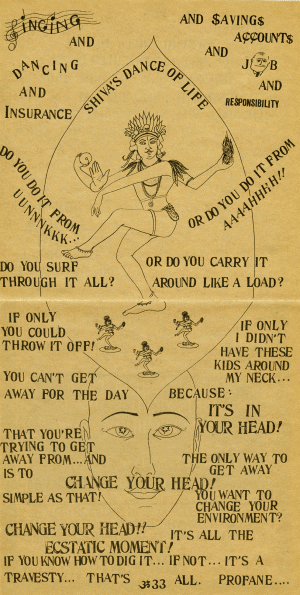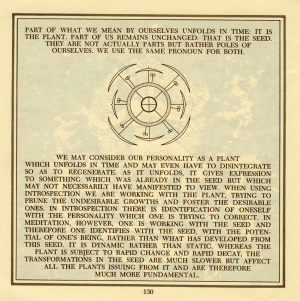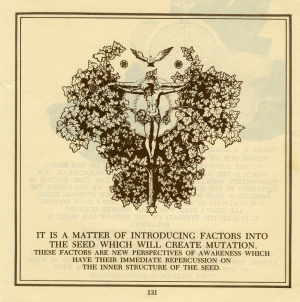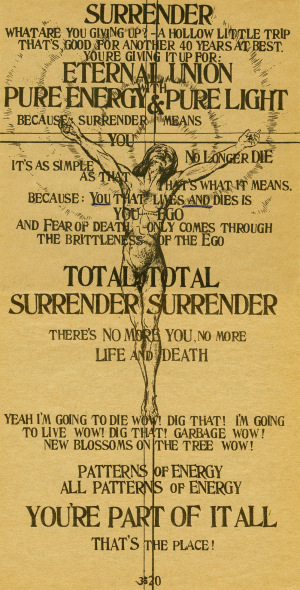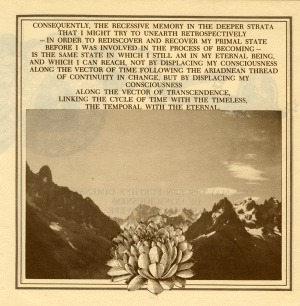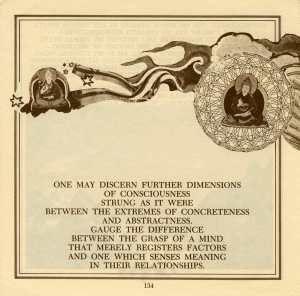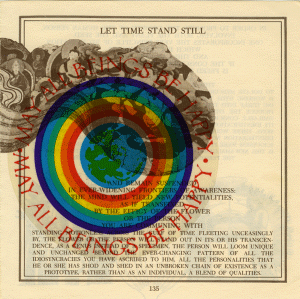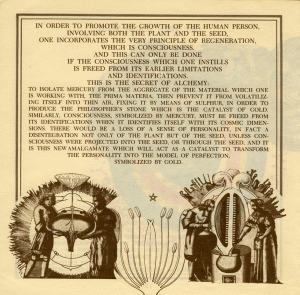by "Pir Vilayat Inayat Khan," aka The Lama Foundation
First published 1971
NOTICE: THIS WORK MAY BE PROTECTED BY COPYRIGHT
YOU ARE REQUIRED TO READ THE COPYRIGHT NOTICE AT THIS LINK BEFORE YOU READ THE FOLLOWING WORK, THAT IS AVAILABLE SOLELY FOR PRIVATE STUDY, SCHOLARSHIP OR RESEARCH PURSUANT TO 17 U.S.C. SECTION 107 AND 108. IN THE EVENT THAT THE LIBRARY DETERMINES THAT UNLAWFUL COPYING OF THIS WORK HAS OCCURRED, THE LIBRARY HAS THE RIGHT TO BLOCK THE I.P. ADDRESS AT WHICH THE UNLAWFUL COPYING APPEARED TO HAVE OCCURRED. THANK YOU FOR RESPECTING THE RIGHTS OF COPYRIGHT OWNERS.
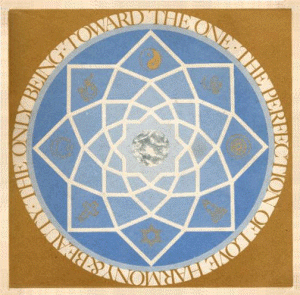
UNDER CONSTRUCTION
Table of Contents:
1. Dedication
2. Prologos
3. Forward
4. Beyond the Dream
5. Intuition of the Self
6. Buddha/Christ
7. Preparation
8. Theory
9. New Age Practices in Meditation
10. Light
11. Breath
12. Sound
13. The Causal Plane
14. Dhikr
15. The Chain of the Sufis
16. The Sufi Masters
17. A Message in Our Time
18. Coming Back Into Life
19. The Search for the Teacher
20. Initiation
21. Counselling
22. Meditation and Psychedelics
23. The Relationship of Love
24. The Meeting of the Ways
25. The Cosmic Mass
26. The Man of God
27. Prayers
28. Afterword
29. Glossary
30. Bibliography
31. Synopsis of Practices
32. Silsila
33. The Heart
[Librarian's Note: "33" ENTRIES TO THE TABLE OF CONTENTS]
WE HAVE ALL BEEN EXPOSED AT ONE TIME OR ANOTHER TO THE SHEER THRILL OF BEING LIT UP INTENSELY, BY THE ATOMIC FLASH.
***
THERE IS A POLLUTION PROBLEM WITH HUMAN BEINGS. IT HELPS TO KNOW JUST HOW TO CLEANSE ONESELF.
***
BAPTISM WITH FIRE, WITH THE IGNEOUS STATE, IS A MORE RADICAL FORM OF PURIFICATION. WE ARE IN A CONTINUAL STATE OF COMBUSTION, EVEN THE HEAT OF OUR BODIES IS A PRODUCT OF THIS BURNING PROCESS. IT IS A PERPETUAL HOLOCAUST IN THE TEMPLE, WHICH IS CALLED IN THE VEDAS THE ETERNAL SACRIFICE OF PURUSHA, THE SPIRIT, IN WHICH ALL CREATED BEINGS PARTICIPATE.
***
ENDURANCE IS TO OFFER ONESELF AS A TARGET FOR THE ARROWS OF PAIN.
***
FOR YEARS HIS SOUL STRUGGLED TO FREE ITSELF FROM THE NON-SELF BY THE DEATH-RAY OF NEGATION AND ANNIHILATION, SUFFERING NOTHING UNREAL AROUND HIM OR IN HIMSELF.
***
Let time stand still, and remain suspended in ever-widening frontiers of awareness: The mind will yield new potentialities, as if transferred by the effigy of the flower or the person you are communing with. Standing motionless across the gulf of time fleeting unceasingly by, the flower or the person will stand out in its or his transcendence, as a genus instead of a specimen, the person will loom unique and unchanged beyond the ever-changing pattern of all the idiosyncracies you have ascribed to him, all the personalities that he or she has shod and shed in an unbroken chain of existence as a prototype, rather than as an individual, a blend of qualities.
In order to promote the growth of the human person, involving both the plant and the seed, one incorporates the very principle of regeneration, which is consciousness. And this can only be done if the consciousness which one instills is freed from its earlier limitations and identifications. This is the secret of alchemy: to isolate mercury from the aggregate of the material which one is working with, the prima materia, then prevent it from volatilizing itself into thin air, fixing it by means of sulphur, in order to produce the philosopher's stone which is the catalyst of gold. Similarly, consciousness, symbolized by mercury, must be freed from its identifications when it identifies itself with its cosmic dimensions. There would be a loss of a sense of personality, in fact a disintegration not only of the plant but of the seed, unless consciousness were projected into the seed, or through the seed, and it is this new amalgamate which will act as a catalyst to transform the personality into the model of perfection, symbolized by gold.
***
Many people are of the opinion that all schools of spiritual aspiration lead to the one goal: Here is the unique teacher who has actually studied and practiced the methods of the different schools and can attest to their unity. A story is told of the young Inayat Khan when he was with his Murshid Abu Hashin Madani in Hyderabad. A fellow Mureed complained to the Murshid: "Inayat has been seen with the yogis, the idolators. He is constantly reading the Bhagavad Gita. He keeps a Bible by his bed. Only yesterday I saw him conversing with a Rabbi. He is well known among the Parsis, the worshippers of fire. Will you not make him renounce his heretical ways?" The Murshid replied: "Leave him alone. It is not for you to understand the mission he is being prepared for." His mission was to harmonize east and west with the music of his Sufi message. Tolerance and mutual enrichment have often been part of the spiritual atmosphere in India, where Hindus, Muslims, Buddhists, Parsis, Jews, and Christians have lived together peacefully except when, as recently, their differences have been exploited for political reasons. Perhaps the most beautiful expression of this spirit was the spiritual and aesthetic synthesis prevailing at the court of the Moghul Emperor Akbar. The spirit of Akbar's court was a precursor to the kind of Sufism given by Hazrat Inayat Khan to Europeans and Americans in the 1901s and twenties with its emphasis on "The Unity of Religious Ideals."
Pir Vilayat Khan has given concrete expression to the goals outlined by his father, adding to the eastern schools the austere and serene flavor of medieval Christian mysticism, as well as integrative insights derived from sources as seemingly diverse as modern physics and the Greek mystery cults. He shows how the incarnation of Christ is the cosmic counterpoint to the parinirvana of Buddha. He allows one to see the world religions not as mutually exclusive dogmas competing with one another for the claim of absolute truth, but rather as a divine symphony of different tones -- or as the same story told in varying ways to fit varying mentalities. This synthesis of esoteric schools may serve as a key to the coming evolutionary jump in consciousness towards which humanity seems to be moving, the New Age glimpsed by prophets ranging from William Blake to Arthur C. Clarke to Teilhard de Chardin.
The doctrine of evolution of consciousness, particularly stressed by Rumi, is an integral part of Sufi thought. Development of intuition, trust in the heart, the move towards group consciousness, thinking in global terms -- these are signs pointing in the direction of man's continuing evolution. These are also characteristics of the esoteric brotherhoods which have traditionally been at the center of the world religions. What were jealously guarded secrets of the few are now being made known to more and more people, and the seeds of the new consciousness are being gathered from the decaying flowers of the old. Thus it would probably be a mistake to see the new spirituality as a "religious" movement. In going to the heart of the old traditions one is seeking their universal core, and leaving behind the residue of dogma, mere belief, and social convention.
Reading this book is to experience at times that extraordinary transforming presence that Pir Vilayat emanates in person. He somehow defies the description of "person." His archaic fineness and nobility are qualities associated in my mind with the Persian Sufis and with the court of the late Nizam of Hyderabad where Hazrat Inayat Khan was a renowned singer. Parts of this book have the atmosphere of a certain night-blooming flower in the Persian Gardens of Shiraz, home of Hafiz and Sa'Adi., "City of Nightingales." Yet this refinement is combined with a sort of sternness and absolute devotion to his work. Such a being may be seen as a product of adamantly refusing to accept conditioning and of adhering uncompromisingly to an ideal. This is the essence of his teachings on everyday life. Yet the mystery, the special fragrance of the man somehow eludes description. The words used by one of Hazrat Inayat Khan's disciples describe exactly one's encounter with Pir Vilayat Khan: "I had heard about the soul before but never before actually experienced my soul."
-- Toward the One, by "Pir Vilayat Inayat Khan"
German occult groups did not appear out of nowhere. They had historical antecedents. The new Aryan hero owed his birth to the unholy marriage of early Hindu ideas of racial purity and Darwin's concept of evolution. The nineteenth century was remarkable for great change. In Germany the change was more drastic than in the rest of Europe. Its people had been more completely under the sway of the past; the Middle Ages had still been dominant in agriculture and industry. The industrial revolution happened more rapidly in Germany than anywhere else. From a backward, predominantly agricultural country, it grew almost overnight into a modern industrial state. Scientific discovery brought a sharp decline in religious faith, and there was a search for new values with which to identify. The state, assuming more and more control, seemed bent on crushing individuality.
The European romantics, wincing at the bitter fruits of modern "progress," delighted in the exoticisms of the East. What the Europeans caught a glimpse of was a kind of serenity which had disappeared from the West and which was very much desired. Napoleon's army, entering Egypt in 1798, found the Rosetta Stone, which scholars labored to decipher. When Champollion solved the riddle, the long-lost tongue of that ancient civilization was loosened and the way opened for the great achievements of the modern science of Egyptology. German archaeologists went along with the Prussian king's expedition in 1842 and further refined the study.
The Germans also made important contributions to understanding the real nature of Islamic literature and thought. Persian love poems, called ghazals, had the greatest effect on German poets. The most brilliant of the Persian poems were Sufi. In the Sufi tradition, the poems were interpreted as allegorical and mystical revelations of the divine. German poet-scholars made use of them to such an extent that Heinrich Heine admonished: "These poor poets eat too freely of the fruit they steal from the garden groves of Shiraz, and then they vomit ghazals." The Muslims had prejudiced the Europeans against the Hindus, whom they regarded as superstitious and degraded. But with the translation of ancient Sanskrit texts, India began to exert a fascination on the West.
The philosopher Johann Gottfried von Herder read Indian philosophy with enthusiasm and managed to inspire the German romantics, who were markedly different from the romantics in Europe at large -- more given to morbid bitterness. Herder cautioned them not to be frightened by supernatural elements such as gods moving among men or nature personified. These, he said, were depictions of actual experiences, for on that paradisical river, the Ganges, the golden age still existed. The romantics could not have been more pleased, longing as they were for just such a golden age. "It is to the East," wrote Friedrich Schlegel in 1800, "that we must look for the supreme Romanticism."
The spiritual journey to the East, undertaken by many German scholars, philosophers, and men of letters, brought a new mythology to a politically, economically, and socially despairing country: a mystical view that all finitude is the result of a fall from the absolute and that the effects of the Fall have to be repaired by the course of history. These writers began to glorify the Middle Ages as a period of dialogue with God, when men, art, and religion had been unified. To restore the lost innocence became their aim....
Baron Rudolf von Sebottendorff, had been Grand Master of a small lodge which called itself the Thule Society, and he stated right at the outset: "Thule people are the ones to whom Hitler first came." Thule and the Germanen Orden joined forces right after the war. Sebottendorff was an authority on astrology, alchemy, divining rods, and rune symbolism. Sebottendorff was nostalgic for the Middle Ages, when the Jews in Germany had been openly persecuted.
Sebottendorff, born with the less glamorous name of Adam Rudolf Glauer, became first a merchant seaman. At twenty-six, he transplanted himself to Turkey, and became a Turkish citizen. In 1909, he had the good fortune to be adopted by an Austrian baron named Heinrich von Sebottendorff, in Istanbul. During his sojourn in Turkey, with his sinecure as engineer-cum-supervisor of a substantial estate, he had been able to spend time reading Oriental philosophy and Theosophical writings, as well as engaging in Sufi meditation. He acknowledged that he had been a Knight of the Masonic Order of Constantine. Turkish Freemasonry, it seemed, had kept the ancient Aryan wisdom intact. "It must be shown," said Sebottendorff, "that Oriental Freemasonry still retains faithfully even today the ancient teachings of wisdom forgotten by modern Freemasonry, whose Constitution of 1717 was a departure from the true way."
By 1918 he had formed his own lodge, the Thule Society, and elevated himself to the rank of Grand Master.
Sebottendorff did not need to invent anything. Inspired by Blavatsky's Secret Doctrine, he respun the age-old myth of Atlantis, calling it Thule. Like Atlantis, Thule was believed by occultists to have been the magic center of a vanished civilization. Madame Blavatsky speculated that it had been swept away in the first Deluge, 850,000 years ago. Compared with it, the much more recent Noah's Flood had been a puddle, and mythical, besides. One could get some idea of the appearance of the inhabitants of the island of Atlantis by studying the colossal statues at Easter Island. Here, Madame Blavatsky believed, were the relics of the giants of the Fourth Race; only this Atlantean being deserved to be called "MAN," for only he was completely human. After him, the Fall. Among other things, the Fall supposedly cost him his invaluable third eye, which gave him spiritual insight. What had caused the Fall? Tucked away in The Secret Doctrine is the answer: The Atlanteans had mated with semi-human beings.
Sebottendorff transposed Blavatsky's complicated cosmology, by which she had sought to confound the evolutionists. In place of her sub-races who had extinguished the "Flames" by "long generations of bestiality," ruining it for the Aryans, he taught members of Thule that the purity of their blood had been defiled by the Jews.
-- Gods and Beasts: The Nazis and the Occult, by Dusty Sklar
There was another substitute for religion. As the Protestant religion was given as a substitute for the Catholic faith to those religiously inclined, so Masonry became a substitute for those disinclined to show outwardly their belief, which they observed in secrecy. This kept them free from the blame of their people, friends and relations, for adhering to another faith, and they had their ritual without a priest imposed upon them from a spiritual hierarchy, having had their worshipful master elected from among themselves. They sought exaltation by the Masonic ritual supported by a long tradition and avoided any disputes on religious ideals by keeping their lips closed and by a vow of secrecy. The origin of this is not much different from the Protestant origin, the Protestant religion came from the orthodox Islam, Masonry from the secret order of Muslim mystics, to whom all meant the same, whether Christian, Muslim or Jew. Those seekers after truth who pursued these contemplative souls while in the battle, were admitted to be initiated by the possessors of this mystery, but were welcomed with unsheathed swords and doors were fast locked after their admission, and every manner of reception was expressive of a process through which the enemy was received into the circle of friends. So the secret of the life of the meditative dervishes, expressed symbolically in the form of ritual, was brought to the Western world as a key to the mystery of life.
Woman was not admitted until A.D. 1893, when Mrs. Annie Besant by the order of the Masons in France opened a new Order and brought into it women and men together in sharing this mystery, which was, however, kept apart and has not been recognized by the Scottish Lodge of Masons until now.
There has been so much spoken of the organization of the Catholic Church being so wonderful, but nothing can equal Masonic organization which today exists in the world, embracing the best intellects and most influential personalities of almost all nations. As Masonry has spread wide, so its social and political influence has become greater every day, and has performed wonders in the social and political world. Yet the main object with which the Masonic initiation was given, still remains to be fulfilled: a drill which is meant for battle. That battle is self-realization, which is the central theme of the Sufi Message.
An old institution which presents some Eastern thought to the West is the Theosophical Society, which was founded principally by Madame Blavatsky, who was from Russia, a visionary and mystically minded person who is said to have worked wonders. It is told that Masters from the Himalaya are the supporters at the back of the Society, and that the spiritual hierarchy of certain Masters whose names seem to be derived from Eastern languages, though they are hardly to be found in any sacred tradition of the world, are so to speak the guardians of the Society, which has an esoteric school of its own under the guidance of Mrs. Annie Besant, who is one of the four chief workers of this Movement. These, namely Colonel Olcott and Mr. Leadbeater and the two above-mentioned ladies established their headquarters first at Benares and now at Adyar and made the Movement worldwide. If it were not for the Theosophical Society there would not be the tolerance and response to Eastern thought of every kind which is given by people thus inclined in the West. The work of this Society has broken to a great extent the bias of the Christian faith, and the idea that the people in the East are heathens and their religion barbarous, which was prevalent in the West owing to the Christian missionary propaganda.
As the Theosophical Society was the first of its kind in the West, its founders had to withstand no end of opposition. The Movement has splendidly established itself throughout Europe in a comparatively short period of time. It has taken as its principal work to break prejudices of caste, creed or color by the understanding of Truth, and it has placed Truth on the altar as the principal religion. Every exponent of thought from the East who goes to the West, finds the doors of this Society open to welcome him. A warm welcome and a respectful regard is accorded to him on the platform of the Theosophical Society. A great deal of Buddhistic and Hindu literature has been translated into the Western languages by Theosophical writers. Most of the work has been done by Mrs. Annie Besant, who has shown the most wonderful talent as a speaker and as a writer, besides the great power and efficiency she has shown in holding this vast Movement firmly in hand in spite of all difficulties which stood in her way. I personally have not had occasion to converse with Mrs. Besant, although I have heard her speak. There is a book by Mme. Blavatsky, "The Secret Doctrine", which is held as a mystery by some of the followers of Theosophy, which contains mostly her dreams and visions. If it were not for the theory of karma and reincarnation which the Theosophical Society has brought forward as its special doctrine on which the whole Theosophical theory is based, it would have had great difficulty in touching the Western mind, which wants food for its reason first before accepting any faith. The ideal of reincarnation and karma made a great revolution in the West in the religious world. The backbone of religion in the West had already been broken, and this idea broke its legs, letting Eastern thought rise, introduced in the West in the form of Theosophy.
However, the idea of reincarnation and karma, which came from the race of Hindus, never has given the full satisfaction to that race itself. The influence of Islam, the ideas of the Sufis, made a great change in the Hindu outlook for many centuries, and great Hindu poets like Nanak and Kabir, Sundar and Dadu, Ram Das and Tukaram, and religious reformers of India like Swami Narayan and Babu Keshoba Chandra Sen, Dayananda Saraswathi, Devendranath Tagore, all these although they could not entirely erase this idea from the surface of the Indian mentality, upon which it had been engraved for ages, yet modified it to such an extent that hardly anyone speaks about these things. Especially the wise, the Sages, hold as their object in life mukti, liberation from the captivity caused by karma. It is a worn-out doctrine of the East which was revivified by the Theosophical Society in the West. In the first place it appealed to the people in the West because it answered immediately the question why one is well off in life and why another suffers.
Anthroposophy is another offshoot of Theosophy, which has sprung up in the West as a result of a conflict between two great workers of the Theosophical Movement: Mrs. Besant and Dr. Steiner. In order to distinguish this Movement as different from the Theosophical Society the founder had to build another building on the same foundation, leaving out all Eastern colors and designs which exist in Theosophy. Every effort has been made by its founder to impress his followers with the idea that Eastern wisdom is different from the Western, and the way of the West is different from the way of the East, and what is called in Buddhism "Nirvana", annihilation, is not the thought of Christ; Christ's teaching is the eternal and ever-progressing individuality, by which he means to say that it is not God alone Who lives for ever, but every individual entity as a distinct and separate entity is eternal and is gradually progressing to the fullness of its own individuality. In this way he divides one truth into two thoughts opposing each other, the oneness of the whole being on the part of the Eastern thought and individuality of every being as the Western thought. It is a pity if a thinker in order to distinguish one special doctrine which is his own conception goes as far as cutting into two parts the truth which in reality is one. No doubt, this idea answers the Western mentality for to many the idea of annihilation as expressed in Eastern terminology is awful, although it is a transitory state. The day is not far off when, if not through religion then by science, the people in the West will realize the oneness of the whole being, and that individuals are nothing more than bubbles in the sea.
-- Journal Review of Religions, by Hazrat Inayat Khan

